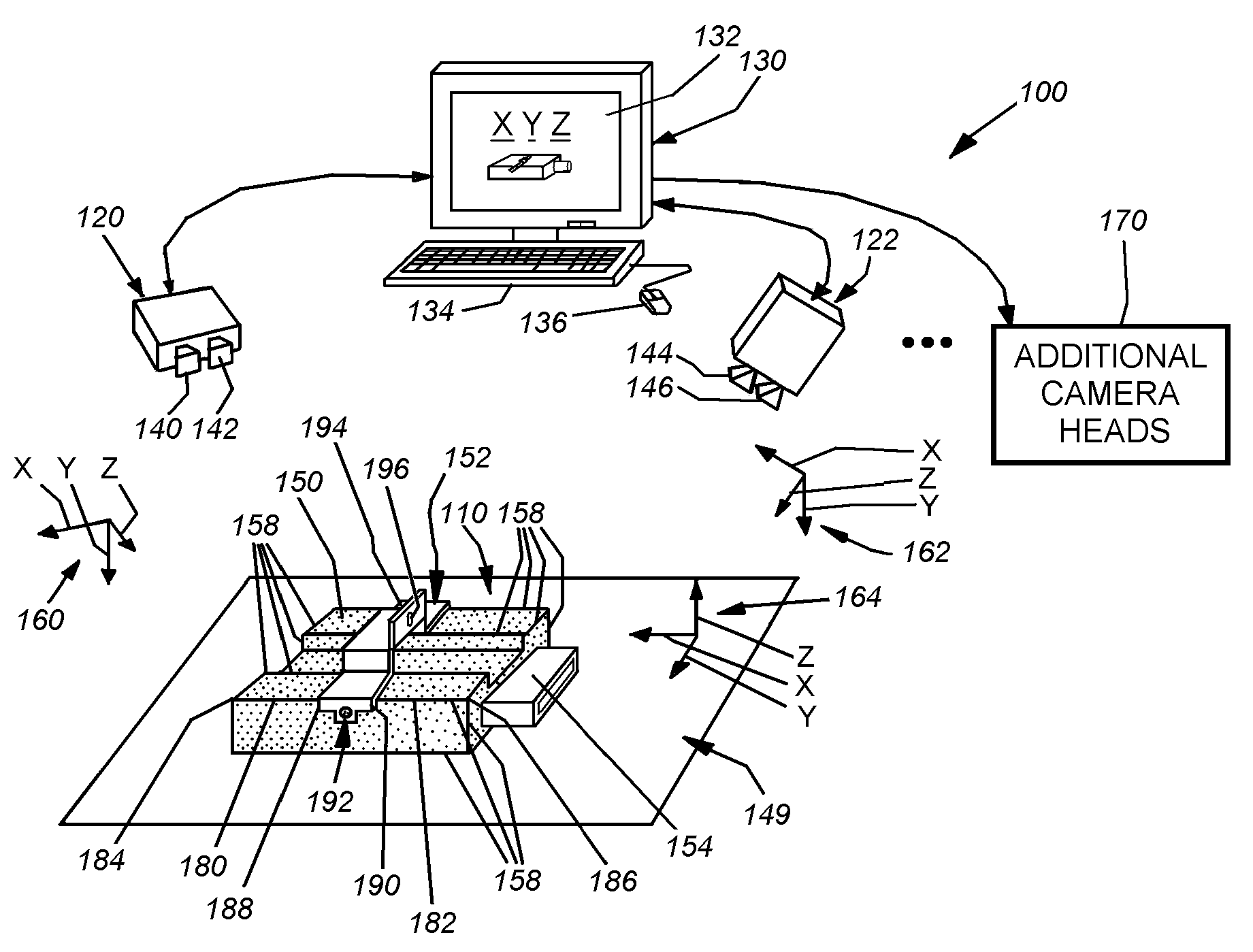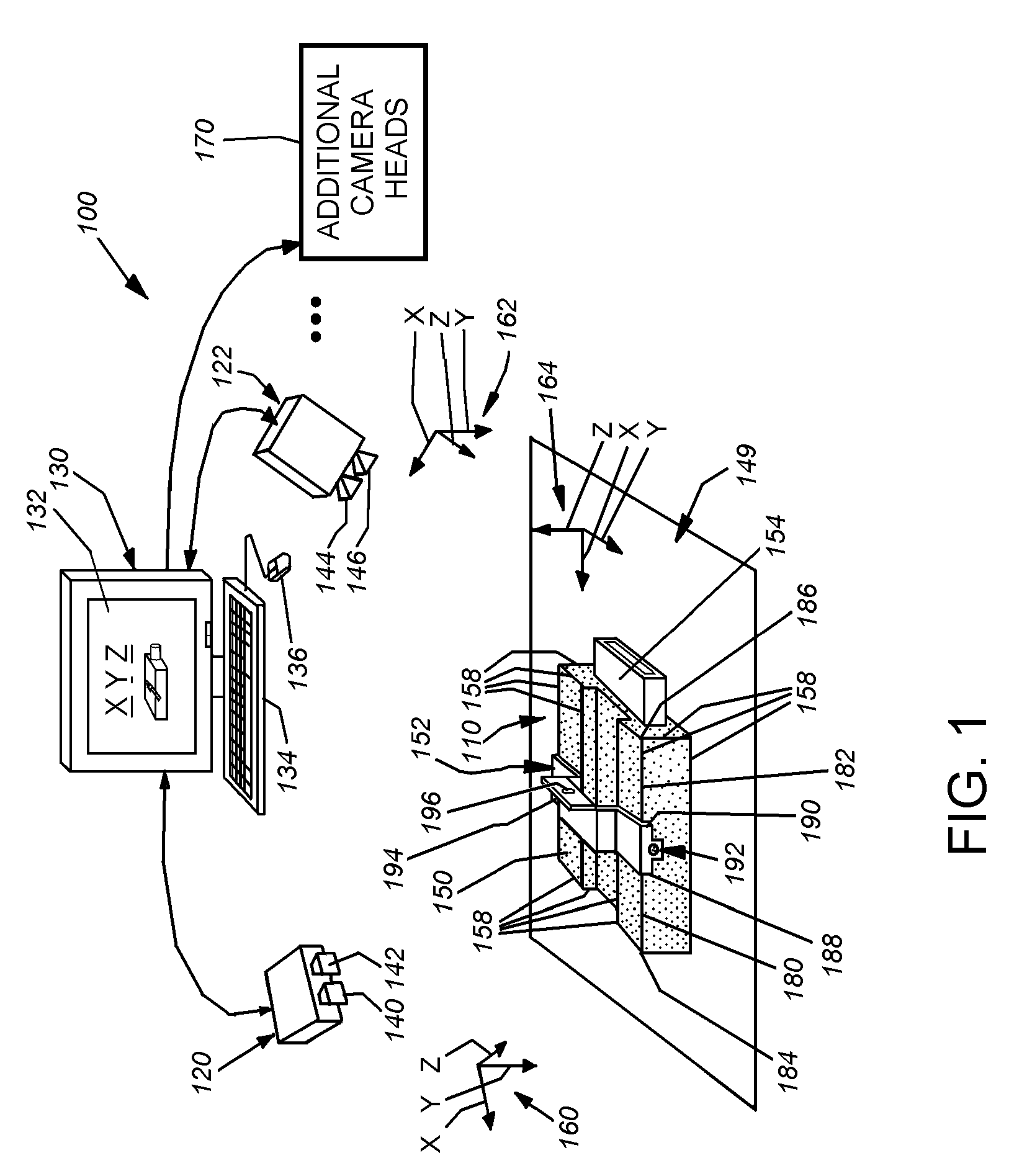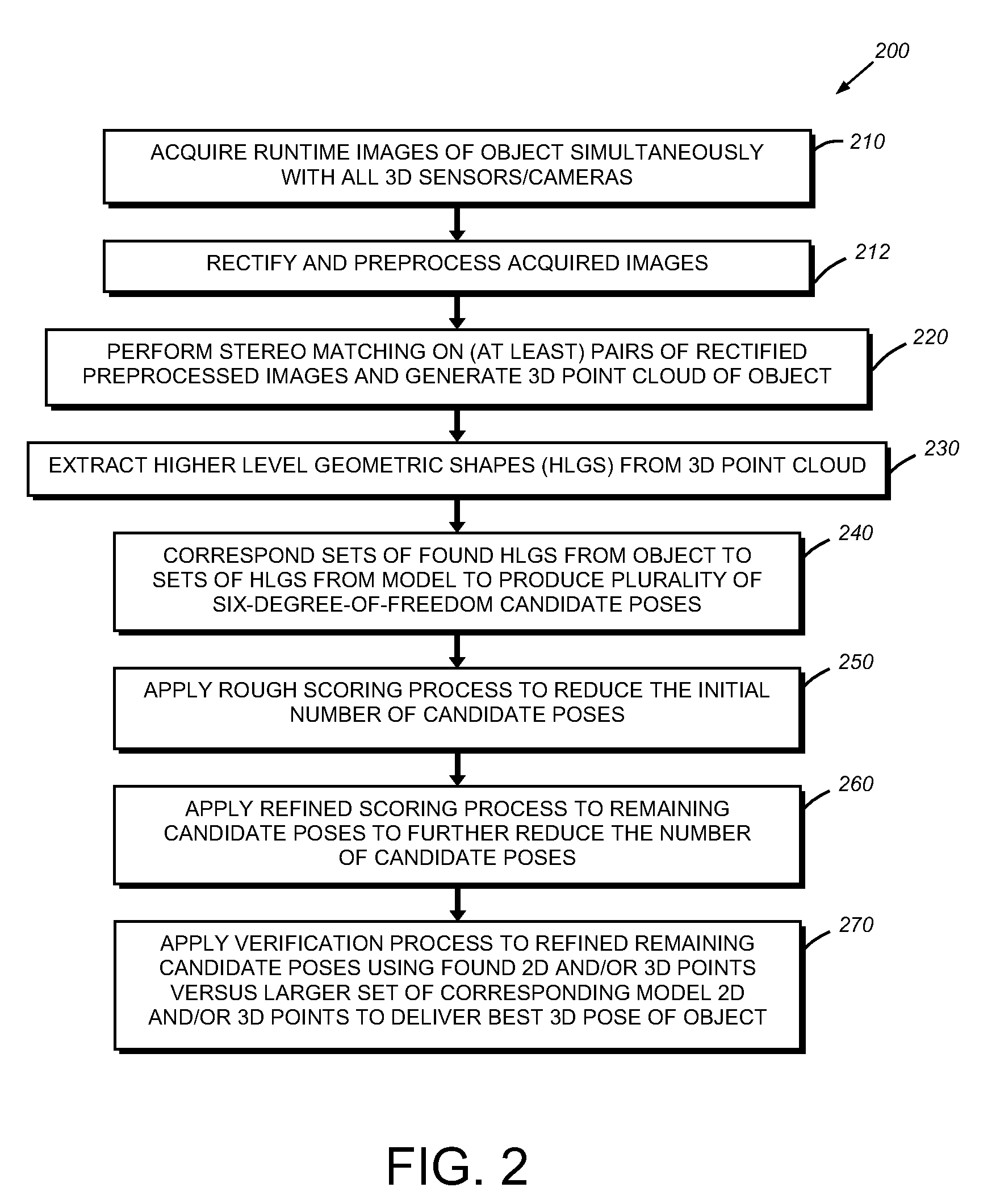System and method for three-dimensional alignment of objects using machine vision
a machine vision and object technology, applied in the field of machine vision systems and methods, can solve the problems of limiting the effectiveness of algorithms and tools based on the acquisition of two-dimensional images, affecting the accuracy of machine vision, and the alignment of objects that were clearly recognized by the system in one orientation may be less-recognizable or unrecognizable to the system, etc., to achieve the effect of enhancing the edge features, and reducing the difficulty of machine vision acquisition
- Summary
- Abstract
- Description
- Claims
- Application Information
AI Technical Summary
Problems solved by technology
Method used
Image
Examples
Embodiment Construction
[0027]I. System Setup
[0028]FIG. 1 depicts a typical arrangement for a system 100 for determining the three-dimensional alignment, or pose, of a viewed object 110 according to an illustrative embodiment of this invention. In this example the system 100 employs a plurality of exemplary three-dimensional stereo camera heads 120 and 122 that are interconnected with an exemplary image processing system 130. In this example, the image processing system is a PC-type computer having a display 132, keyboard 134 and mouse interface 136. The PC includes appropriate video processing components and executes program instructions contained in a computer-readable medium that enable the system and method in accordance with this invention. It should be clear to those of skill in the art, that a PC is only one type of image processing device. In alternate embodiments, the processing components can reside directly within the housings of one or more of the stereo head cameras (or other 3D sensors), and ...
PUM
 Login to View More
Login to View More Abstract
Description
Claims
Application Information
 Login to View More
Login to View More - R&D
- Intellectual Property
- Life Sciences
- Materials
- Tech Scout
- Unparalleled Data Quality
- Higher Quality Content
- 60% Fewer Hallucinations
Browse by: Latest US Patents, China's latest patents, Technical Efficacy Thesaurus, Application Domain, Technology Topic, Popular Technical Reports.
© 2025 PatSnap. All rights reserved.Legal|Privacy policy|Modern Slavery Act Transparency Statement|Sitemap|About US| Contact US: help@patsnap.com



